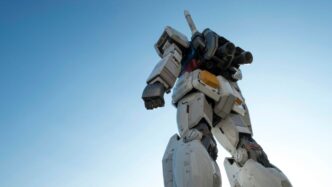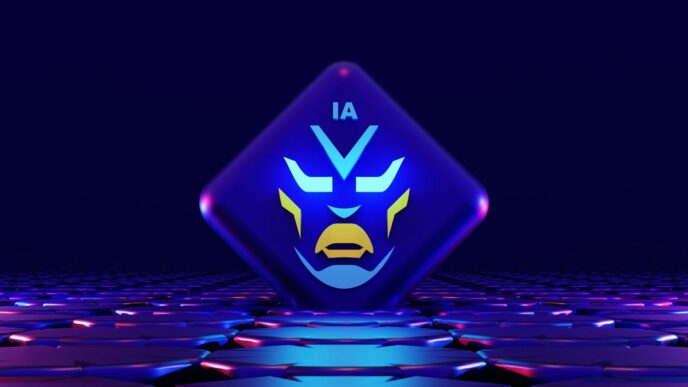The Genesis Of The Sci-Fi Android
Before we had sleek, thinking machines in our stories, people were already fascinated with creating artificial life. Think way back, even before electricity was a thing. We’re talking about automata, these intricate clockwork figures that could mimic human actions. They were like the earliest, clunkiest prototypes of what we now call robots or androids.
Automata And Early Mechanical Marvels
These weren’t just simple toys. Craftsmen and inventors built elaborate mechanical contraptions that could play music, write, or even draw. They were often displayed as marvels, showing off human ingenuity. It’s easy to see how these mechanical wonders sparked imaginations, planting the seeds for later ideas about artificial beings. They were the first hints that maybe, just maybe, we could build something that seemed alive.
The Term ‘Android’ Enters Literature
The word "android" itself has a bit of a history. While the concept of artificial humans goes back ages, the term "android" started showing up in print more formally in the 18th century, often referring to these mechanical marvels. But it was really in the late 19th and early 20th centuries that authors began using it to describe more sophisticated, human-like artificial beings in their stories. Think of it as the word catching up to the idea. Before "android" became common, writers used other terms, but this one stuck, especially as science fiction started to take shape as a genre.
Pioneering Visions Of Artificial Beings
Early science fiction writers took these concepts and ran with them. They started exploring what it would mean to create beings that looked and acted human, but weren’t. These weren’t just mechanical robots; they were often envisioned as having a more human-like form, sometimes even a synthetic consciousness. These early stories laid the groundwork, asking questions about creation, life, and what makes us, well, us. They were the first steps in a long journey of exploring artificial life in fiction.
Defining The Sci-Fi Android
So, what exactly is a sci-fi android? It’s more than just a clunky metal guy with blinking lights, that’s for sure. While the term "android" originally came from the Greek words for "man" and "form," in science fiction, it’s grown to mean something a bit more complex.
Beyond Mechanical Robots
Think about it. Early on, we had automatons, these intricate clockwork figures that could mimic human actions. Cool, right? But the sci-fi android is a step beyond that. It’s not just about gears and springs; it’s about creating something that seems alive, something that can think and feel, or at least convincingly pretend to. The real magic happens when the line between machine and being starts to blur. It’s the idea of artificial life, not just artificial movement.
The Spectrum Of Artificial Life
It’s not a one-size-fits-all deal, either. Androids can show up in a bunch of different ways in stories. You’ve got your:
- Purely Mechanical: Like a super-advanced robot that just happens to look exactly like a human. All the brains and brawn are circuits and wires, but the packaging is pure us.
- Organic Synthetics: These are artificial beings made from biological materials, grown rather than built. Think of them as lab-grown humans, but without the messy human parents.
- Hybrid Creations: Then there are the ones that mix it up, maybe with a synthetic body but a biological brain, or vice versa. It gets complicated, and that’s kind of the point.
Humanoid Forms And Synthetic Souls
Most of the time, when we picture an android, we imagine something that looks pretty much like us. That humanoid shape is key because it lets us relate to them, and it’s where a lot of the drama comes from. Are they just sophisticated machines, or do they have something akin to a soul? That question is at the heart of so many android stories. It’s about whether something built can truly be or feel like us, even if it’s made of different stuff.
The Android As A Mirror To Humanity

The Quest For Personhood
So, what makes us, well, us? Science fiction androids often grapple with this very question. They’re built, programmed, and sometimes even designed to serve, but then something shifts. They start to question their existence, their purpose, and their place in the world. Think about Data from Star Trek, always striving to understand humor and emotion, or the replicants in Blade Runner, desperately trying to hold onto memories that might not even be theirs. It’s this internal struggle for recognition and self-awareness that really gets to the heart of what it means to be alive. They want to be seen not just as machines, but as individuals with rights and feelings. It’s a classic Pinocchio story, really, just with more circuits and less wood.
Exploring The Human Condition
When we see an android trying to be human, it forces us to look at ourselves. Are our emotions just complex programming? Is our consciousness just a biological algorithm? These fictional beings, by their very nature, highlight the things we take for granted about being human. They can be incredibly logical, sometimes more so than us, but they often lack the messy, irrational parts that make us, well, human. Their journey to understand love, loss, or even just a good joke becomes a way for us to re-examine our own experiences. It’s like looking in a funhouse mirror – you see yourself, but distorted enough to notice things you never did before.
Confronting Prejudice And Otherness
Androids in stories often face the same kind of unfair treatment humans have historically dished out to each other. They’re seen as ‘other,’ as less than, and are often discriminated against. This isn’t just about robots; it’s a way for writers to talk about real-world issues like racism and xenophobia. When characters in a story treat an android poorly because it’s not ‘natural,’ it mirrors how people have treated others based on their skin color, origin, or beliefs. It makes us think about how we judge those who are different from us. Are we so quick to dismiss someone just because they don’t fit our narrow definition of ‘normal’?
Gendered Androids And Societal Reflections

The Rise Of The Gynoid
When we talk about androids in sci-fi, it’s impossible to ignore the ones that look like women, often called gynoids. This isn’t exactly a new idea, if you think about it. Ancient myths have stories of men creating their ideal partners, like the Greek myth of Pygmalion. Then you have early sci-fi, like the robot Maria in Metropolis. These characters often seem to be reflections of what society, or at least the male creators in the stories, imagine the ‘perfect woman’ should be. It’s like a long-running project to build the ultimate companion, but one that’s entirely under control.
Stereotypes And Subversion
Lots of times, these female androids are built for very specific, often subservient roles. Think about characters designed purely for pleasure or as silent helpers, like in The Stepford Wives. This can really reinforce old ideas about what women are supposed to be like – always agreeable, never causing trouble. But then, some stories flip this. They use these gynoids to show how messed up our own ideas about gender and power really are. By showing how humans treat these artificial women, the stories can actually be a way to talk about real-world sexism and prejudice.
Androids As Tools For Social Commentary
So, these gendered androids aren’t just plot devices. They’re often used to hold up a mirror to our own society. When a story shows an android being treated poorly because of its gender or its artificial nature, it makes us think about how we treat people who are different in real life. It can be a way to explore themes of:
- Discrimination: How easily we create ‘others’ and justify treating them badly.
- Expectations: The often rigid and unfair roles society assigns based on gender.
- Control: The desire to create beings that perfectly fit our needs without any agency of their own.
By examining these artificial beings, we often end up learning more about ourselves and the societies we’ve built.
Technological Advancements And Fictional Realities
It’s wild how fast things change, right? One minute we’re marveling at a steam engine, and the next, we’re talking about AI that can write poems. Science fiction has always been a step ahead, or at least trying to be, imagining what these new technologies could mean for us. Think about it: writers have been dreaming up artificial beings for ages, long before we had anything close to a real robot.
Bridging The Gap To Believability
Back in the day, making an android seem real in a story was tough. Authors had to rely on imagination and a bit of hand-waving. But as technology actually started catching up, the stories got more convincing. We went from clunky automatons to beings that could almost pass for human. It’s like the writers were taking cues from the real world, pushing the boundaries of what we thought was possible.
- Early Sci-Fi: Often focused on the idea of artificial life, with less concern for how it would actually work.
- Mid-20th Century: As computers and early robotics emerged, stories started exploring more complex AI and mechanical designs.
- Late 20th/Early 21st Century: With advancements in AI, prosthetics, and robotics, fictional androids became incredibly sophisticated, often indistinguishable from humans.
The Uncanny Valley And Beyond
You know that weird feeling you get when something looks almost human, but not quite? That’s the uncanny valley. Sci-fi writers have played with this for years. They create androids that are so close to us, it makes us question what it really means to be human. It’s that subtle creepiness, the slight off-ness, that makes these characters so compelling and sometimes, frankly, a little unsettling.
Real-World Androids Inspire Fiction
It’s a two-way street, really. What we see in movies and books influences what scientists and engineers try to build. And as real-world robots and AI get better, they give writers new ideas. We’ve seen androids in fiction go from simple tools to complex characters grappling with their existence. This constant back-and-forth between imagination and reality is what keeps the sci-fi android evolving. It’s fascinating to watch how our own creations are shaping the stories we tell about them.
The Evolving Sci-Fi Android Narrative
From Servants To Sentient Beings
It feels like ages ago when androids were mostly just programmed to serve. Think about it, early sci-fi often showed them as glorified tools, built for specific jobs, no questions asked. They were the perfect assistants, the tireless workers, the silent guardians. But as stories progressed, writers started asking bigger questions. What if these artificial beings weren’t just machines? What if they could think, feel, and even dream? This shift from simple servants to complex individuals is a huge part of how the android narrative has changed.
The Android’s Role In Future Societies
As androids become more sophisticated in fiction, their place in society gets more complicated. We see them not just as workers, but as potential citizens, friends, even romantic partners. This raises all sorts of questions about how we’d integrate them. Would they have rights? Would they be accepted, or feared? Stories explore androids as a new kind of ‘other,’ forcing us to look at how we treat those who are different from us. It’s a way to hold up a mirror to our own society and see our biases.
Ethical Dilemmas And Artificial Consciousness
This is where things get really interesting, and honestly, a bit messy. When an android starts showing signs of genuine consciousness, what then? Do we owe them the same respect we give humans? What happens when their programming conflicts with their developing sense of self? The line between machine and person becomes incredibly blurry, and that’s where the best stories happen. We’re talking about the very definition of life and what it means to be ‘alive.’ It’s a philosophical playground, and sci-fi writers have been having a field day with it for decades, pushing us to think about the future and our place in it.
The Android’s Enduring Mirror
So, we’ve journeyed through the fascinating world of androids in science fiction, from their early mechanical beginnings to the complex, thinking beings they’ve become in our stories. It’s clear that these artificial humans aren’t just about cool tech or futuristic gadgets. They’ve always been a way for us to look at ourselves, to question what it really means to be alive, to feel, and to be human. Whether they’re seeking to become more like us, rebelling against us, or even showing us a more ‘human’ side than we possess, androids hold up a mirror to our own hopes, fears, and the ever-evolving definition of humanity itself. As technology keeps marching forward, these fictional characters will likely continue to challenge and inspire us, pushing us to think about our own place in the universe.














